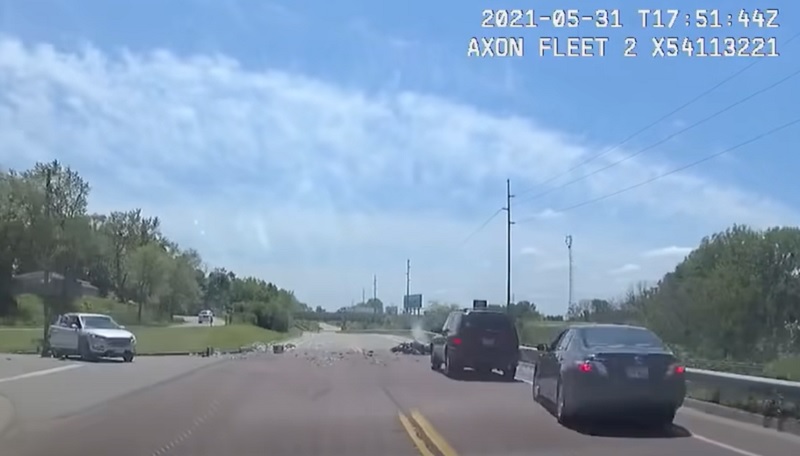
It’s the same arithmetic in existence for quite some time: A tremendous population and fewer cops to mitigate people’s problems equates to increased casualties, some resulting in extreme consequences such as fatalities.
Recent studies indicate some of our nation’s motorists have taken to the fast lane in significant velocities defying obvious safety projections. In a MarketWatch article, a declaratory passage highlighted that auto insurance costs are climbing at alarming rates and “an increase in reckless driving behavior” is one reason why.
Like just about everything nowadays, the pandemic’s reach scratched at things we didn’t quite consider happening…until they happened.
Defunded police agencies aside, Car and Driver magazine noted that during the height of the pandemic, and the newfound mandates and policies including social distancing engendering a contactless society, police agencies curtailed their cops from conducting traffic enforcement. Any imagination could foresee how some among the driving demographic would take advantage of that, to the tune of 100-plus mph (per electronic speed-detection devices posted in some cities).
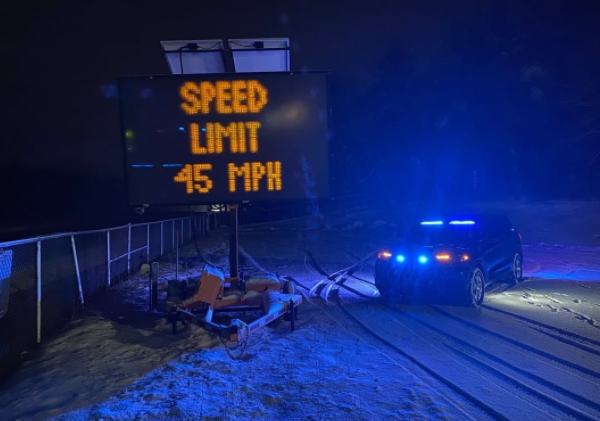
(Photo courtesy of the Maine State Police.)
The Associated Press published some salient points pertaining to the lockdowns and their negative influences on human behavior. In today’s context, automobiles became projectiles on potential collision courses: “Pandemic lockdowns and stay-at-home orders kept many drivers off U.S. roads and highways last year. But those who did venture out found open lanes that only invited reckless driving, leading to a sharp increase in traffic-crash deaths across the country.”
A cohort of mine chimed in and echoed similar to the AP report, that the escalation in perilous motor vehicle operation is likely due to the human psyche and what happens when our species is sequestered for too long. I get it. But there is just no plausible excuse for blazing trails at whatever pace one feels like, especially amid a population trying to rebalance upturned lives (no fault of their own) and recoup some semblance of normalcy without indulging in selfish behaviors.
Director of the Minnesota Public Safety Department’s Office of Traffic Safety, Michael Hanson said, “It’s kind of terrifying what we are seeing on our roads. We’re seeing a huge increase in the amount of risk-taking behavior.”
Law enforcement agencies trying to keep up with the epidemic stemming from the pandemic have dubbed these potentially deadly culprits as “super-speeders.”
Along my travels in Florida, some drivers are boldly exceeding safety protocols, taking foolish chances, making mindboggling maneuvers, thus creating carnage. This, in a state relatively robust with law enforcement presence.
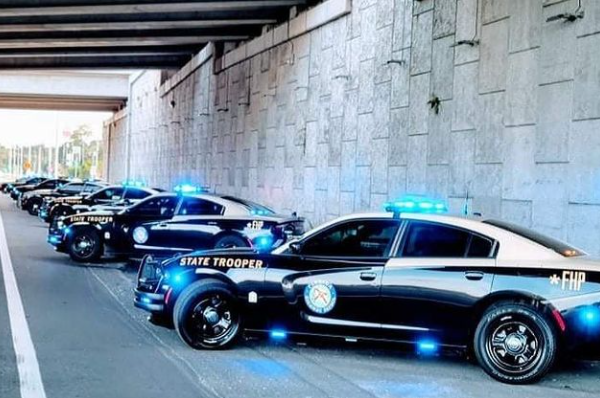
(Photo courtesy of the Florida Highway Patrol.)
For example, a teenager in my county was arrested over the weekend for exceeding the posted speed limit, to the tune of 123 mph. He didn’t get twisted around a utility pole. He didn’t make physical car-to-car contact with any other motorists. Not even a scratch in the car’s paintjob. He rocketed on a narrow span of state roadway connecting two counties via a slightly elevated bridge over Tampa Bay waters.
Turns out the youngster was observed revving his engine before rocketing across the bay. The observer watching this unfold was positioned to do something about it.
According to a Fox News report, a Clearwater police officer witnessed the young driver’s extraordinarily stupid stunt, one which often enough adds to statistical data extrapolated from police reports titled “Traffic crash with fatality” or something similar.
The Clearwater police arrest report indicated that “[Jazion Treyvon] Alonso was speeding westbound on the bridge, racing and weaving in and out of traffic with wanton disregard for safety shortly after 1:15 a.m. when he was pulled over.”
Mind you, the stretch of roadway where Alonso apparently tried to compete with an invisible jet is posted at 60 mph —meaning he was traveling at more than double the speed limit— with reduced speeds posted at both ends of the bridge’s expanse (where pedestrians patronize restaurants and clubs and hotels and corporate centers overlooking the waterfront).
In the discourse with police officers, Mr. Alonso stated that he doesn’t pay attention to his speedometer. That’s the mindset we are discussing: Aloof, uncaring, reckless, ill-concerned for others.
This occurred in Florida where law enforcement is highly regarded and essentially protected against any of the Sunshine State’s municipalities or counties ponderous of defunding—a statutory act compliments of pro-police Governor Ron DeSantis. Imagine such supercharged drivers operating in other states’ jurisdictions where police staffing was cleaved under the anti-public safety campaigns, meaning diminished police presence (weakened traffic enforcement) resulting in otherwise-preventable catastrophes.
In context, the U.S. Census Bureau real-time chronicles upward of 332 million people in the United States, all of whom rely on a now-decreasing trajectory of what was previously estimated at 850,000 law enforcement officers. Given the fluid nature of the nation’s exodus of police officers due to anticlimactic circumstances, with no definitive present-day record of how many cops are serving in America, solitary news releases and anecdotal reports from the approximately 18,500 police entities in the country serve as a self-reporting base defining staffing shortages.
Although surges of road-reckless drivers are only recently coming to the fore after sifting through data, hypotheses may include the fact that drivers during the pandemic-induced lockdowns had far fewer automobiles on the roadways, thus open space, influencing motorists’ minds to mash down on the accelerator more than they normally would on traditionally congested highways and byways.
As Mr. Hanson noted with relevance to pandemic proportions, “Almost immediately the fatality rate started to go up, and go up significantly. It created less congestion and a lot more lane space for divers to use, and quite honestly, to abuse out there.”
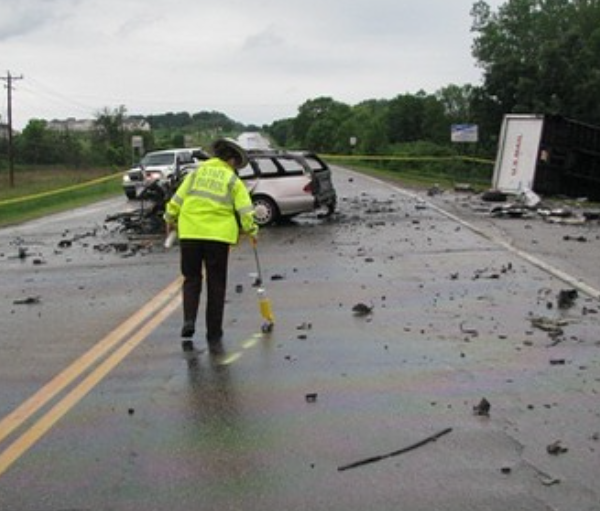
(Photo courtesy of the Minnesota State Patrol.)
Synonymously, given the ridiculous anti-police blasters demanded defunding and abolishing law enforcement, with several governments kowtowing and cleaving millions upon millions from police operating budgets resulting in reduced funds, disbanded units, and the exodus of cops…traffic enforcement suffered. That directly conveys to innocents made vulnerable by the anarchy among Mad Max-like motorists hijacking roadways and doing as they please.
Pointedly, the local jurisdictions which arrogantly sidelined their LEOs, prohibiting cops from enforcing certain traffic laws, have contributed to the demise of law-abiding motorists by a publicized hands-off policy which scofflaws, at the very least, salivate over. Broken windows theory easily applies to motor vehicle violations—start small and go bigly.
Any of this was expected. All of it was predicted, most notably by police officers.
“People have ideas, but they know little to nothing about reality,” is a statement made years ago by a man named Scotty Kyle. I see its applications to those who foolishly support the shortsighted defund notion while failing to consider the real ramifications.
We’re looking at you, Austin, Texas. In a report posted by KXAN News on February 8, 2022, “Crashes involving speedy drivers severely hurt or killed more than 620 people in Austin last year. In some cases, Austin Transportation Department safety officer Lewis Leff said drivers were going 15 miles per hour over the posted limit,” emphasizing a particular deadly stretch on Austin’s Slaughter Lane (official name of the city street).
Austin politicos slashed the police budget and may now harbor some regrets. Per a Fox News piece, the Austin city council “decided to cut about one-third of its police budget—the largest cut of any major city in America.”
Fox reporter Matt Wall wrote that the “funding cuts brought with them a series of changes to the Austin Police Department. Cadet classes were canceled, making it more difficult to bring more officers onto the force. Certain specialized units were cut back [including traffic enforcement units]. Attrition soared. By May 2021, police staffing shortages led to a 30% increase in 911 response times.”
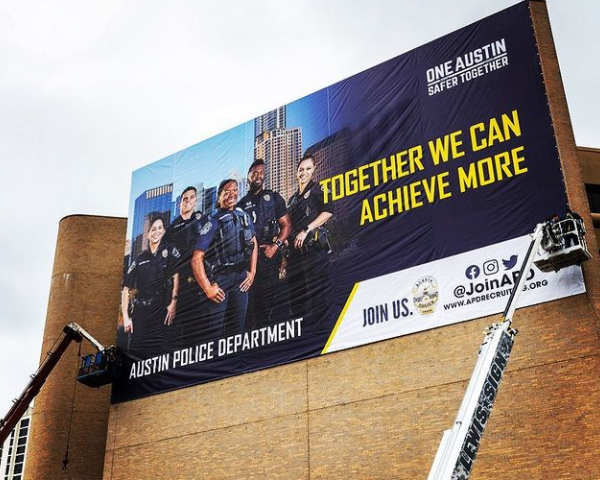
(Photo courtesy of the Austin Police Department.)
While Austin hashes out their public safety hiccups, their political minds decided to post a bevy of electronic speed detection signs at their most deadly intersections and straight-aways known for excessive speed, so there’s that.
Generally, every single law enforcement officer in America is a traffic cop—it is one of their conventional duties and responsibilities. Although metropolis-sized police agencies have organized traffic enforcement units primarily relegated to safe operations of motor vehicles, most of the cop shops in the U.S. are nowhere near metro staffing levels. Therefore, police administrations relegate traffic enforcement to their officers as one component in empirical duty provisions.
Defunded law enforcement entities were effectively strongarmed by kowtowing, pandering politicians to do more with less, both in terms of neutered police operations (among which is traffic enforcement) and adequate contingents of cops to respond to calls and ensure public safety.
More cops on the streets logistically means robust traffic enforcement preempting speedsters and aggressive motor vehicle operation, thereby saving lives of the would-be violators and the innocents sharing the roadways.